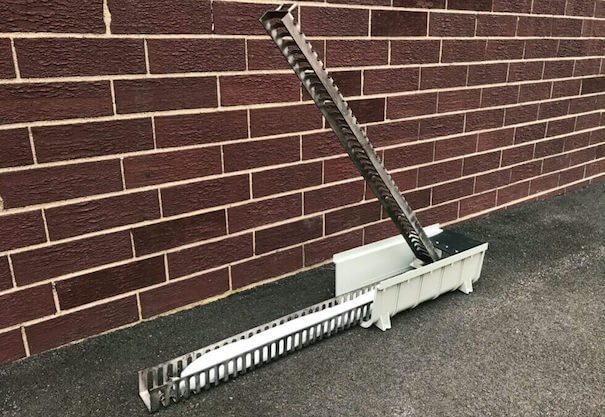The simple design easily traps sediment, trash, debris and even oil within the trench while allowing runoff water to pass through the filter and out through the storm drain system.

As with all of our products, Fabco backs up our Trench Drain™ with full technical support and world-class customer service. We go beyond the expected to provide solutions to any stormwater management challenge. That is why Fabco is the leader in stormwater management.
Now, Fabco’s Trench Drain™ adds to the solutions we can offer you. Call us today about our Trench Drain™ or any of our quality Fabco Industries’ products.
Trench Drain Reference Material
There are a multitude of applications that warrant a trench drain system and it’s often difficult to determine the best product for a given application. Although seemingly insignificant, choosing components for your drain system deserves careful consideration as they can determine the life and effectiveness of your linear drain. We can help with your product selection. The following section will help determine which Trench Drain System best meets your specific needs and includes such factors as rainwater run-off, grade, wheel loadings and pedestrian traffic.
Many of the topics discussed in this section relate to all modular and pour-in-place systems. Hydraulic Capacity Determine the amount of liquid that will be flowing through the trench drain in a given time period. p Calculate Flow p Site Conditions p Fluid Characteristics Application Choose a load rating for the area for which the grate will be installed.
Environmental factors and types of traffic should be considered to ensure long life of the trench drain system. p Load Rating p Wheel Types / Edge Protection p Material Properties Specific job requirements will often play a role in channel and grate selection. This could include everything from material selection to grate lockdowns and legal requirements. p Aesthetics p ADA & Pedestrian Safety p Country of Origin Requirements.
Construction and Maintenance Considerations
The design of an open channel shall be consistent with the standard construction and maintenance practices of the Department. Standard ditch linings are detailed in the Design Standard Index drawings and Standard Specifications. In the event the standard index drawings and specifications are not suitable for a specific project need, a detailed design shall be developed. This information must be specified in the design documents.
Ditches, outfall ditches retention/detention areas, and other drainage related features must be provided with berms and other physical access devices that facilitate maintenance activities. Consideration shall be given to future expansion of the facilities and to possible increased maintenance requirements. Absolute minimum values should only be used in extremely stable areas, in areas requiring infrequent maintenance, or in areas where existing physical constraints require their use.
Berms should be based at the narrowest point; right-of-way should be reasonably uniform. If double ditches are specified, the minimum berm width between the two ditches is 10 feet if the ditches are dry, 15ft if the ditches are wet, for maintenance access. Contact the local maintenance office for minimum access requirements when the minimum berm width is not feasible.
Hydraulic Gradient
Include friction losses in the computation of the design hydraulic gradient for all storm drain systems. Energy losses associated with special pollution control structures (weirs, baffles, etc.) and due to utility conflict structures shall also be included when present in storm drain systems. When hydraulic calculations include only the major losses such as those described above and do not include all minor energy losses, the elevation of the hydraulic gradient for design storm conditions shall be at least 1 foot below the theoretical gutter elevation (i.e.1.13’ below the edge of pavement for Type E or F Curb).
This does not apply to ditch bottom inlets and other similar conditions where temporary ponding or overload is acceptable. However, any increase over predevelopment stages shall not adversely change offsite land use values, unless flood rights are acquired.

